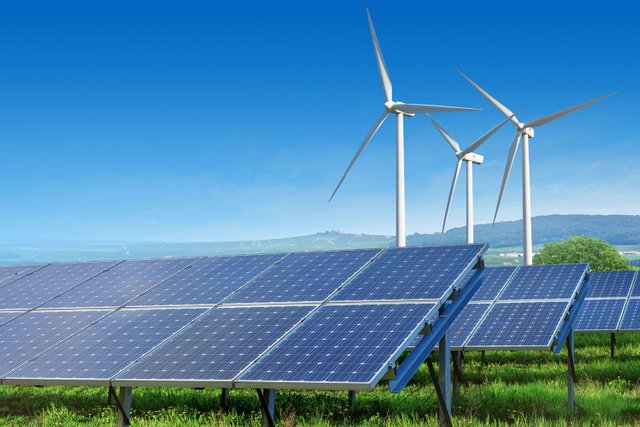Can 100% renewable energy power the world?

Every year, the world uses This massive scale of fossil fuel dependence pollutes the Earth and it won't last forever. Scientists estimate that we've consumed about 40% of the world's oil. According to present estimates, at this rate, we'll run out of oil and gas in 50 years or so, and in about a century for coal. On the flip side, we have abundant sun, water, and wind. These are renewable energy sources, meaning that we won't use them up over time. What if we could exchange our fossil fuel dependence for an existence based solely on renewables? We've pondered that question for decades, and yet, renewable energy still only provides about 13% of our needs. That's because reaching 100% requires renewable energy that's inexpensive and accessible. This represents a huge challenge, even if we ignore the politics involved and focus on the science and engineering. We can better understand the problem by understanding how we use energy. Global energy use is a diverse and complex system, and the different elements require their own solutions. But for now, we'll focus on two of the most familiar in everyday life: electricity and liquid fuels. Electricity powers blast furnaces, elevators, computers, and all manner of things in homes, businesses, and manufacturing. Meanwhile, liquid fuels play a crucial role in almost all forms of transportation. Let's consider the electrical portion first.
The great news is that our technology is already advanced enough to capture all that energy from renewables, and there's an ample supply. The sun continuously radiates about 173 quadrillion watts of solar energy at the Earth, which is almost 10,000 times our present needs. It's been estimated that a surface that spans several hundred thousand kilometers would be needed to power humanity at our present usage levels. So why don't we build that? Because there are other hurdles in the way, like efficiency and energy transportation. To maximize efficiency, solar plants must be located in areas with lots of sunshine year round, like deserts. But those are far away from densely populated regions where energy demand is high. There are other forms of renewable energy we could draw from, such as hydroelectric, geothermal, and biomasses, but they also have limits based on availability and location. In principle, a connected electrical energy network with power lines crisscrossing the globe would enable us to transport power from where it's generated to where it's needed. But building a system on this scale faces an astronomical price tag. We could lower the cost by developing advanced technologies to capture energy more efficiently. The infrastructure for transporting energy would also have to change drastically. Present-day power lines lose about 6-8% of the energy they carry because wire material dissipates energy through resistance. Longer power lines would mean more energy loss. Superconductors could be one solution. Such materials can transport electricity without dissipation. Unfortunately, they only work if cooled to low temperatures, which requires energy and defeats the purpose. To benefit from that technology, we'd need to discover new superconducting materials that operate at room temperature. And what about the all-important, oil-derived liquid fuels? The scientific challenge there is to store renewable energy in an easily transportable form. Recently, we've gotten better at producing lithium ion batteries, which are lightweight and have high-energy density. But even the best of these store about 2.5 megajoules per kilogram. That's about 20 times less than the energy in one kilogram of gasoline. To be truly competitive, car batteries would have to store much more energy without adding cost.
The challenges only increase for bigger vessels, like ships and planes. To power a cross-Atlantic flight for a jet, we'd need a battery weighing about 1,000 tons. This, too, demands a technological leap towards new materials, higher energy density, and better storage. One promising solution would be to find efficient ways to convert solar into chemical energy. This is already happening in labs, but the efficiency is still too low to allow it to reach the market. To find novel solutions, we'll need lots of creativity, innovation, and powerful incentives. The transition towards all-renewable energies is a complex problem involving technology, economics, and politics. Priorities on how to tackle this challenge depend on the specific assumptions we have to make when trying to solve such a multifaceted problem. But there's ample reason to be optimistic that we'll get there. Top scientific minds around the world are working on these problems and making breakthroughs all the time. And many governments and businesses are investing in technologies that harness the energy all around us.
Its sad that more isn't being done in the US to promote renewable energy. And under Trump that is unlikely to change anytime soon.
they are crazy for nucler... all powerfull country doing this
when they figure out a way to get solar panels 80% or better efficient, than yes. Also if we can get some water tide turbines, all over, that could be useful too!
hmm
I agree with Nuclear Power being king, but the question from the article was about renewable energy.
80% are you kidding! What energy source do we use today that is anywhere near that!
Ridiculous